Below you can find a complete list of Tanzanian animals. We currently track 270 animals in Tanzania and are adding more every day!
Tanzania is a country in eastern Africa. It borders Uganda to the north, the Indian Ocean to the east, and Rwanda to the west. Tanzania’s geography includes savannahs, wetlands, grassland plains, and wooded forests. The climate can vary from hot in the plains to cool and temperate in the mountains. It is home to Mt. Kilimanjaro, Africa’s highest mountain, and Lake Tanganyika, the world’s second-deepest lake.
Animals native to Tanzania include cheetahs, lions, wildebeests, gazelles, ostriches, elephants, and giraffes. Tanzania has the highest number of predators in Africa, and these include leopards, jackals, hyenas, and big cats. Reptiles include agama lizards and crocodiles.
Interesting Facts About Wildlife in Tanzania

Tanzania has more animals per square mile of land than any other nation on the globe
©Mohamed Hakem/Shutterstock.com
Tanzania has the largest animal population density of any country in the world. There are more animals per square mile of land in Tanzania than anywhere else.
Tanzania has a huge variety of animals. Its fields, wetlands, and forests are home to:
- 430 mammalian species: The coastal nation is home to 60,000 African savannah elephants and about 200 black rhinos. It is also home to cheetahs, leopards, lions, and the rather elusive golden cat. Herbivores which roam its plains include buffaloes, elands, gazelles, wildebeests, and zebras.
- 1,112 bird species: Some of the most popular bird species include albatrosses, black eagles, bustards, cranes, flamingoes, grebes, jacanas, ostriches, oystercatchers, plovers, sandpipers, and secretary birds.
- Tanzania is also home to 60,000 insect species, 100 snake species as well as hundreds of fish, reptiles, and amphibians.
What Is Tanzania’s National Animal?
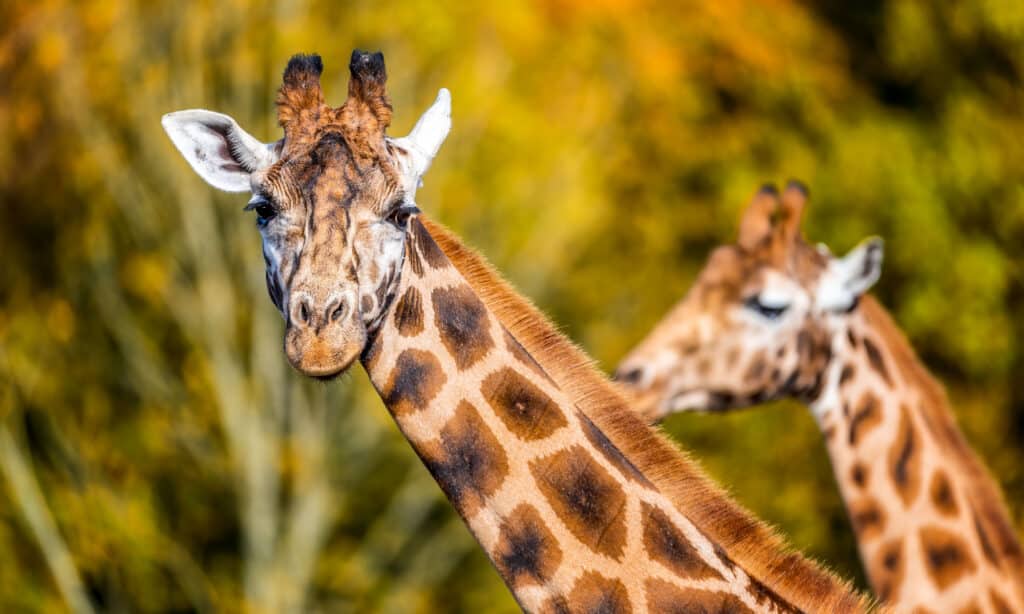
The giraffe is Tanzania’s national animal. The herbivore which is capable of reaching heights of 20 feet is social in nature
©Jane Rix/Shutterstock.com
Tanzania has chosen the graceful, intriguing giraffe (Giraffa camelopardalis) as its national animal. Standing an average of 20 feet tall, the giraffe is the tallest land mammal on earth. Giraffes are social animals. They travel in groups of 10 to 12 females with their young. The males travel separately.
Although there are many giraffes in Tanzania, the World Wildlife Fund says their population numbers are declining. All in all, about 45,000 of the Tanzanian subspecies of the towering mammal known for their unique, star-shaped patterns, call Tanzania and Kenya home. Habitat loss and poaching have put giraffes in a “vulnerable” status for conservation.
Where To Find The Top Wild Animals in Tanzania

Tanzania’s 17 national parks cover more than 16,000 miles
©Naoki Kakuta/Shutterstock.com
Almost 40% of the country has been turned into wildlife preserves, conservation areas, and marine conservation areas. Tanzania has 17 national parks that cover more than 16,000 square miles.
What You Can See on Safari in Tanzania
The wildebeest great migration happens in October and November. During the migration, wildebeests travel across the Serengeti in huge herds. This migration includes more than 200,000 zebras and 300,000 Thomson’s gazelles.
A drive safari or game drive is the most popular way to view animals. This allows you to watch them from the comfort and safety of a closed vehicle. You can even take a balloon safari, which takes you across the whole park.
Some of the best places to see Tanzanian wildlife on safari are Serengeti National Park, Selous Game Reserve, Tarangire National Park, and Mkomazi National Park.
In the wetlands areas, your safari adventure will include sightings of flamingoes, ducks, hippos, waterbucks, common warthogs, crocodiles, and sitatatungas or marshbucks.
Zanzibar Island is part of Tanzania, and the island has its own unique ecology. The coral reefs and mangrove forests are home to whales, dolphins, sea turtles, manta rays, colobus monkeys, dik-diks, Mozambique cobras, and Pemba flying foxes. Zanzibar has one national park and many protected marine areas.
Endangered Animals in Tanzania

The black rhino has been the target of illegal poaching for its horns, resulting in a sharp decline in its numbers
©Yoky, CC BY-SA 3.0, via Wikimedia Commons – Original / License
Despite efforts to protect Tanzania’s rich, unique wildlife, some animals are endangered.
- Aders’ duiker (Cephalophus adersi): This small, beautiful, deer-like animal lives primarily in Kenya, Tanzania, and Zanzibar Island. It stands about a foot tall and has a reddish coat with a gray neck and striped ears.
- Desperate shrew (Crocidura desperate): This endemic mammal lives in Tanzania’s tropical forest areas. It is a small animal with a long, pointed snout and dark-colored fur. There are desperate shrews in Uzungwe National Park.
- Common chimpanzee (Pan troglodytes): As a species, chimpanzees are closer to humans than they are to gorillas or orangutans. They are highly social animals that live in complex societies. Habitat loss, the illegal pet trade, and diseases have caused dramatic drops in chimpanzee populations. They are already extinct in at least four African countries.
- Eastern black rhinoceros (Diceros bicornis michaeli): This large, dark-colored rhino has a long, curved horn. It can reach 12 feet and weigh 3000 pounds. Illegal poaching for its horns has caused it to become endangered.
The Most Dangerous Animals In Tanzania
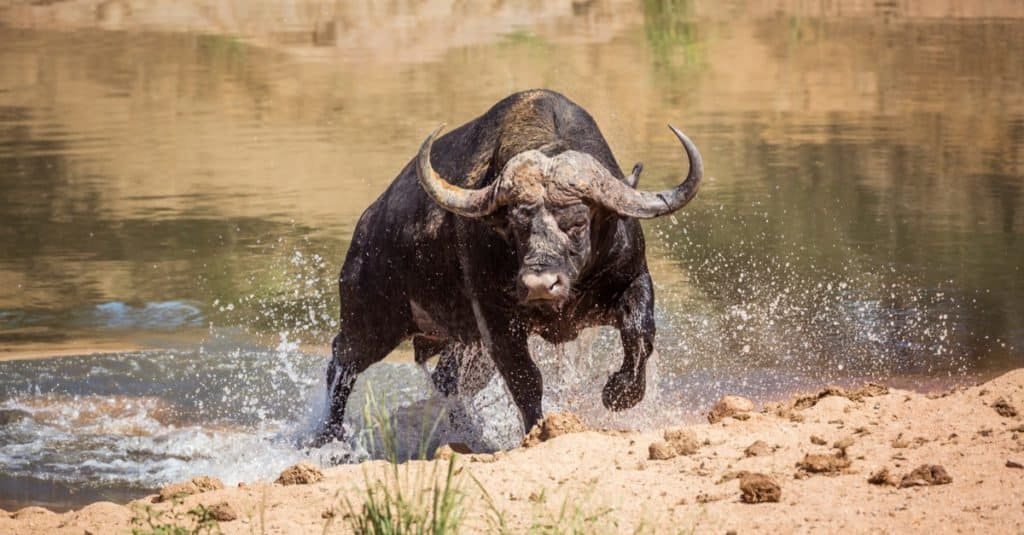
Cape buffalo are capable of weighing about 2,000 lbs and reaching speeds of 37 mph
©PACO COMO/Shutterstock.com
Many dangerous animals live in Tanzania.
- Mosquito: The tiny mosquito spreads malaria, which causes more deaths in Africa than any other disease.
- Black mamba: This venomous snake can grow up to 14 feet. Its venom is so powerful it can completely incapacitate a grown adult. An untreated bite will cause cardiac collapse and death in about seven hours.
- African buffalo: They kill more than 200 people a year. Also known as the Cape buffalo, this animal is stronger than an ox and can weigh a ton or more. Cape buffaloes have massive horns and travel in large herds. It takes an entire pack of lions or cheetahs to bring down one cape buffalo.
- Hippopotamus: After the African elephant, the hippopotamus is the second largest animal on earth. Although they seem fat and lazy, hippos are dangerous. They can weigh over three tons and run more than 30 miles per hour. They are known to attack and kill humans.
The Largest Animal in Tanzania
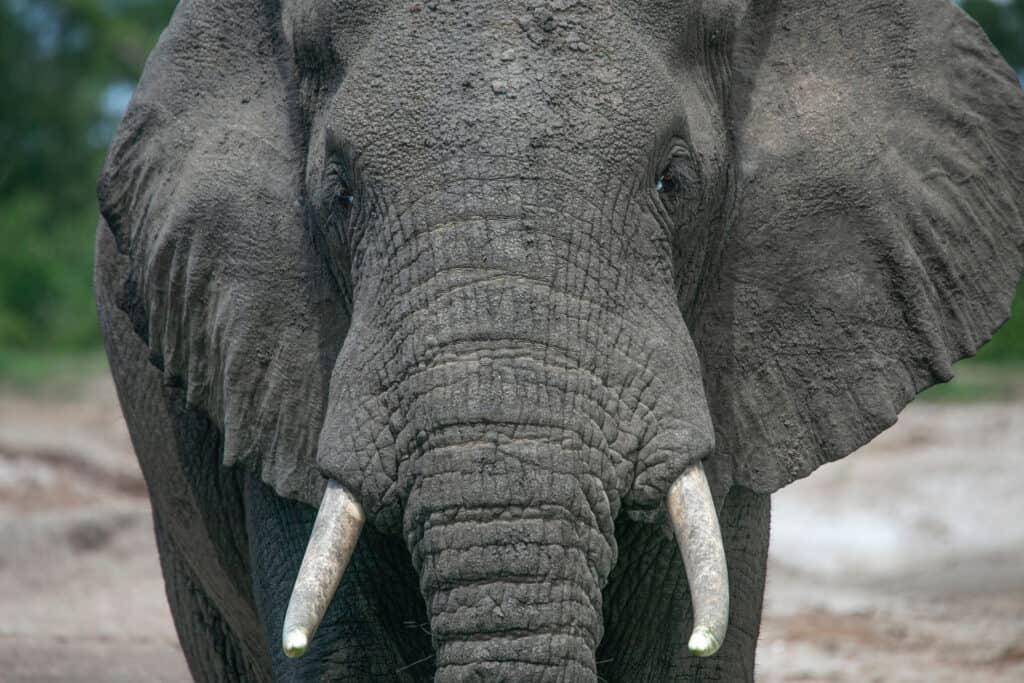
The African savannah elephant is Tanzania’s largest animal, with a population of about 43,000
©Ocean Eloy/Shutterstock.com
The largest animal in this coastal nation is the African savannah elephant (Loxodonta africana). And while poaching caused a sharp decline in the numbers of this lovable pachyderm, its fortunes seem to be on the rise: the population which stood at 110,000 in 2009 declined precipitously to 43,000 in 2014.
The cause was a surge in poaching, resulting in a government crackdown and the dissolution of several smuggling networks. The result? An increase in the Tanzanian elephant population to 60,000, in 2019.
The best places to spot the giant herbivore in its natural habitat are:
- The Serengeti national park: Located in the northern part of Tanzania, this 3,700,000 5,700 sq mile refuge whose main claim to fame is the annual migration of 1.5 million blue wildebeest along with several other antelope species, is also home to 7,000 elephants.
- Tarangire national park: Also located in northern Tanzania, this reserve is home to 2,500 elephants which congregate in their numbers at the Tarangire river during the months of June to September.
- Selous Game Reserve: This World Heritage Site is located in the southern part of the country and covers 19,000 sq miles. Currently known as Nyerere National Park, it is considered to be the refuge with the largest elephant population in Tanzania, which is approximately 25,000.
The Rarest Animal in Tanzania
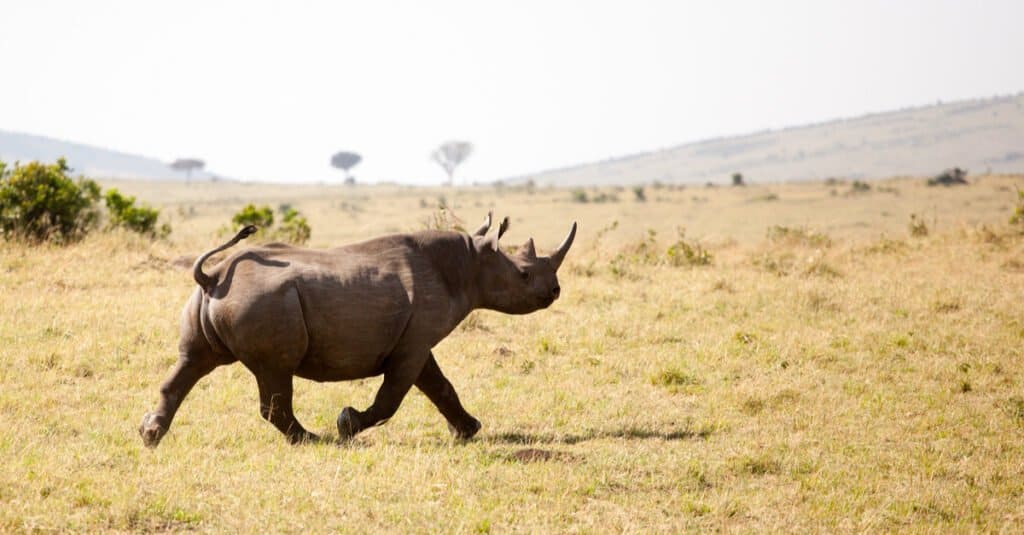
Less than 200 black rhinos currently live in Tanzania, a far cry from a population which once approached 10,000 individuals, in the 1970s
©Anya Newrcha/Shutterstock.com
The black rhinoceros (Diceros bicornis) is the rarest animal in Tanzania. Capable of weighing up to 6,385 lb and measuring 6 feet at the shoulder, this giant herbivore can easily be recognized by the pair of horns on its snout, and thick skin, which is however susceptible to ticks and various skin parasites.
The smaller cousin of the white rhino which bears a close resemblance to its Javan relative relies on an excellent sense of sight and a keen sense of smell in the wild.
Two subspecies of this endangered pachyderm can be found in the coastal nation which sits on the Indian ocean: the Diceros bicornis michaeli and the Diceros bicornis minor.
Less than 200 black rhinos can be found in Tanzania, a far cry from the teeming numbers which once reached 10,000 about half a century ago, which have since plummeted due to heavy poaching.
The best places to spot the giant herbivore in its natural habitat are:
- The Serengeti national park: Located in the northern part of Tanzania, the famed 5,700 square mile refuge known for being the site of the blue wildebeest migration also hosts black rhinos. It is also ideal for birdwatchers since it is home to 500 bird species.
- Mkomazi National Park: Not many national parks can boast having the continent’s highest peak as their backdrop. But this 3,245 square kilometer wildlife refuge can. Located at an elevation of 6,233 feet, the park which draws its name from a traditional term for a measure of water, is home to black rhinos which can be admired from behind the safety of an electric fence.
The Flag of Tanzania

The green on the Tanzanian flag represents the fertility of the land, the yellow, its mineral resources, the black, the Swahili ethnic group, and the blue, the Indian Ocean
©Julinzy/Shutterstock.com
The flag of Tanzania consists of a rectangle divided into two diagonally with a green upper left-hand half, separated from a vivid blue lower right-hand half by a yellow-edged black band which descends from left to right.
The color green represents the natural fertility of the nation’s soil and its flora and the black band represents the Swahili ethnic group. The yellow borders represent Tanzania’s mineral wealth, while the bright blue color stands for the country’s bodies of water, lakes and rivers, included, and the Indian Ocean.
Tanzanian Animals

Aardvark
Can move 2ft of soil in just 15 seconds!

Aardwolf
The aardwolf has five toes on its front paws

African Bullfrog
The African bullfrog is one of only three species of frog that have “teeth.”
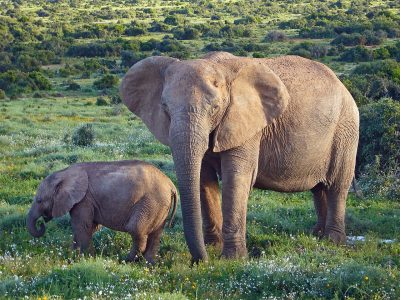
African Bush Elephant
Can drink up to 50 gallons a day

African Civet
Secretes up to 4g of musk every week!

African Clawed Frog
African clawed frogs were used as pregnancy testers from the 1930s to the early 1960s.
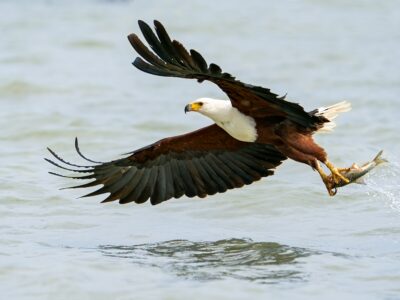
African Fish Eagle
African fish eagles belong to the genus of sea eagles

African Jacana
The males raise the young

African Palm Civet
Solitary but gathers in groups!

African Wild Dog
Also known as the painted dog!
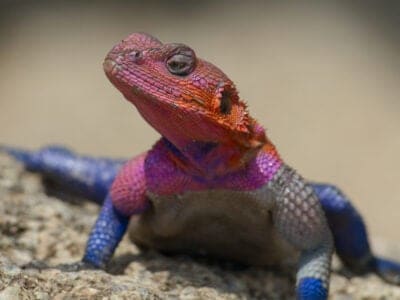
Agama Lizard
The agama forms small social groups that contain both dominant and subordinate males.

Allosaurus
Differnt Lizard” or Allosaurus weighed around two tonnes that is almost equal to a car.
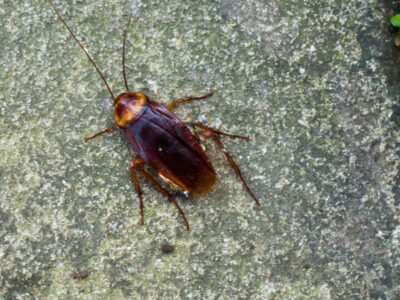
American Cockroach
Despite its name, actually originated from Africa and the Middle East

Ant
First evolved 100 million years ago!

Antelope
Renew their horns every year!

Armyworm
They are so named because they "march" in armies of worms from one crop to another in search of food
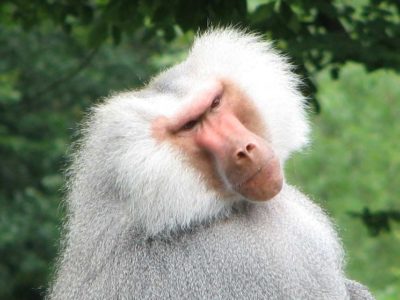
Baboon
Can travel more than four miles a day!

Banana Spider
People spin clothing and fishing nets out of these spiders’ silk.

Barb
There are over 1768 known species!

Barn Owl
Found everywhere around the world!

Barn Swallow
Older offspring help care for new hatchlings.

Bat
Detects prey using echolocation!
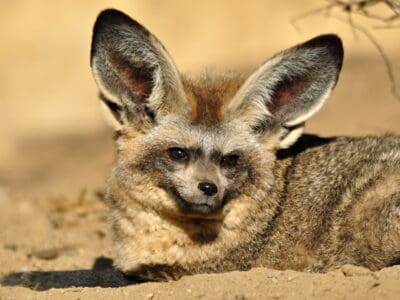
Bat-Eared Fox
Bat-eared foxes can run up to 35 MPH!

Bed Bugs
Bed bugs feed for 4-12 minutes.

Bee
Rock paintings of bees date back 15,000 years

Beetle
There are more than 350,000 different species

Beewolf wasp
They hunt bees

Bichir
The bichir species is more than 400 million years old

Bird
Not all birds are able to fly!
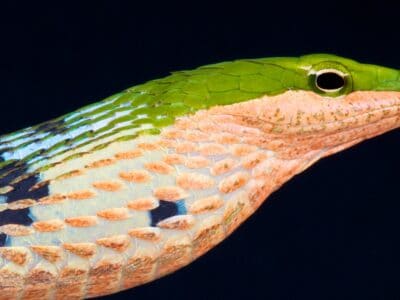
Bird Snake
Usambara vine snakes sit perfectly still and sway in the wind like a stick.

Biscuit Beetle
The biscuit beetle form a symbiotic relationship with yeast
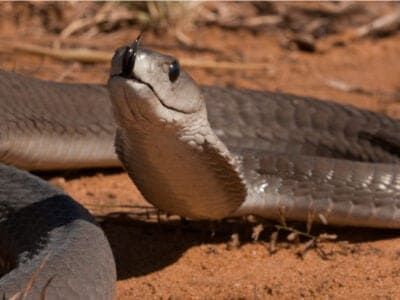
Black Mamba
Black mambas are the longest venomous snake in Africa, and second longest in the world.
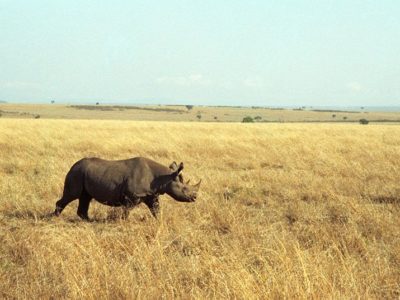
Black Rhinoceros
Horns can grow to 1.5m!

Black Widow Spider
They typically prey on insects!
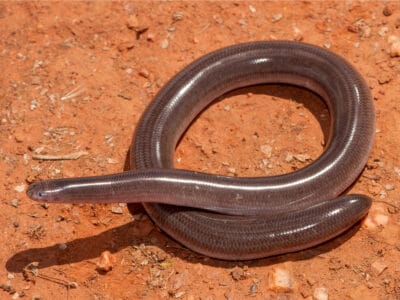
Blind Snake
The blind snake is often mistaken for a worm.
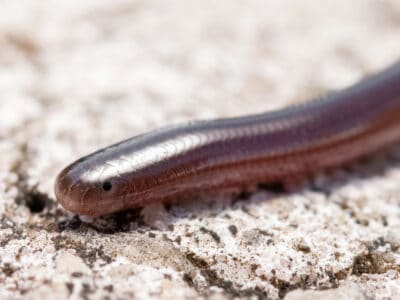
Brahminy Blindsnake
These snakes have been introduced to all continents, except Antarctica!

Brazilian Treehopper
“Mild-Mannered Minimonsters”
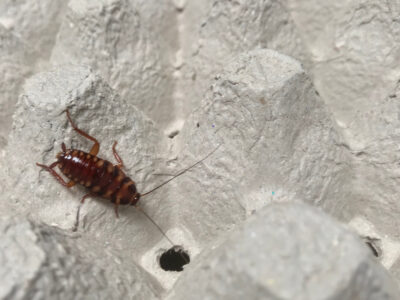
Brown-banded Cockroach
Females glue egg cases to furniture

Brown Dog Tick
Can live its entire life indoors

Buffalo
"They look like you owe them money."

Bumblebee
The most common species of bee!

Bush Baby
In a series of leaps, this creature can cover almost 30 feet of distance in just a few seconds.

Bush Viper
Bush vipers are predators, sinking their fangs into prey while dangling from a tree limb

Butterfly
There are thought to be up 17,500 species!

Caecilian
Some species' babies use their hooked or scraper-like teeth to peel off and eat their mother's skin

Caracal
Has 20 different muscles in it's ears!

Carpenter Ant
Carpenter ants can lift up to seven times their own weight with their teeth!

Cat
May have been domesticated up to 10,000 years ago.

Caterpillar
The larvae of a moth or butterfly!

Catfish
There are nearly 3,000 different species!

Centipede
There are about 3,000 documented species!
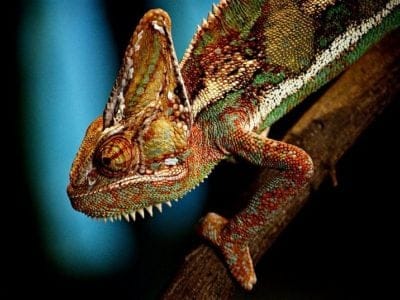
Chameleon
There are more than 160 different species!
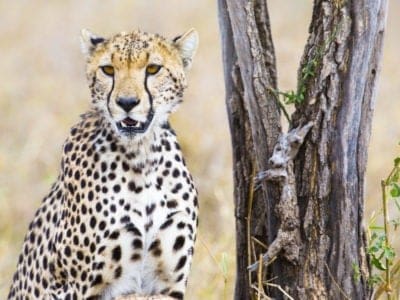
Cheetah
The fastest land mammal in the world!

Chicken
First domesticated more than 10,000 years ago!
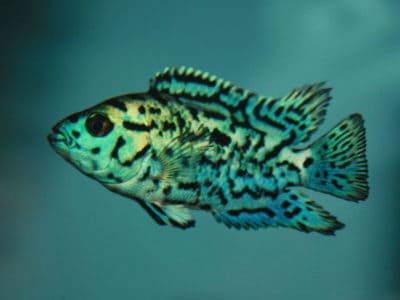
Cichlid
There are more than 2 000 known species!

Cockroach
Dated to be around 300 million years old!

Coconut Crab
The largest terrestrial arthropod in the world

Codling Moth
Pupae are able to undergo diapause to survive poor fruit yield years and winter.

Common Buzzard
The most common raptor in the UK!

Common Furniture Beetle
The common furniture beetle feeds exclusively on wood

Common House Spider
House spiders have the ability to eat most insects in a home.

Cormorant
They can fly 35 mph and dive 150 feet below water.

Cow
There are nearly 1.5 billion worldwide!

Crab
There are 93 different crab groups

Crab Spider
Crab Spiders can mimic ants or bird droppings

Crane
Many are critically endangered species!

Cricket
Male crickets can produce sounds by rubbing their wings together

Crocodile
Have changed little in 200 million years!

Crocodylomorph
Crocodylomorphs include extinct ancient species as well as 26 living species today.

Crow
A group of these birds is called a Murder.
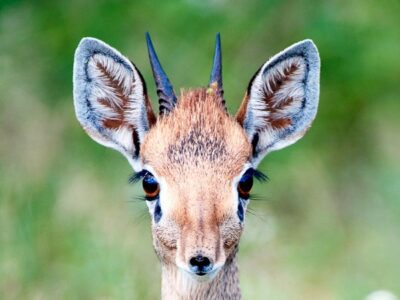
Dik-Dik
Dik-diks use a tar-like liquid from their eye glands to mark their territory!

Dog
First domesticated in South-East Asia!

Dog Tick
Dog ticks feed on dogs and other mammals

Donkey
First domesticated 5,000 years ago!

Dragonfly
It's larvae are carnivorous!

Duck
Rows of tiny plates line their teeth!

Dung Beetle
The dung beetle can push objects many times its own weight

Eagle
Has exceptional eyesight!

Earthworm
They are hermaphrodites, which means they have male and female organs

Earwig
There are nearly 2,000 different species!
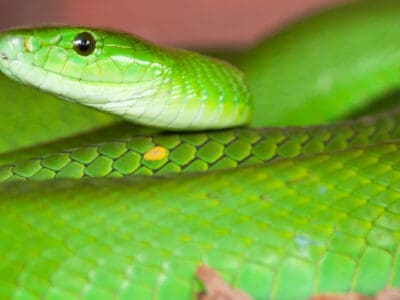
Eastern Green Mamba
It is completely arboreal, and its green color is one of the adaptations that make life in the trees possible.

Eel
Eels can be a mere few inches long to 13 feet!
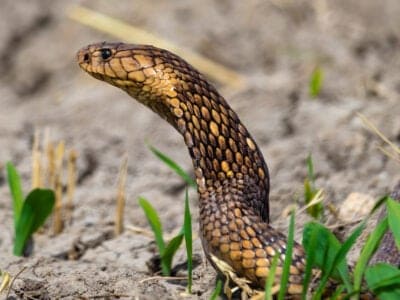
Egyptian Cobra (Egyptian Asp)
The Egyptian cobra is one of the largest cobras in Africa.
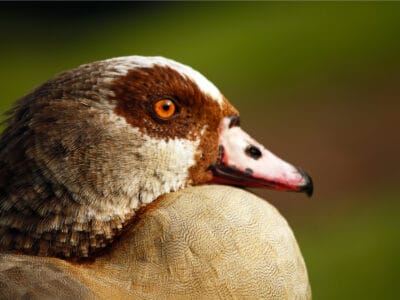
Egyptian Goose
A duck species that resembles a goose when flying
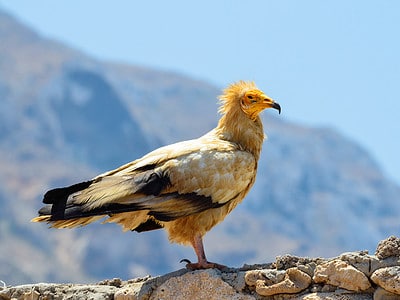
Egyptian Vulture
They steal large ostrich eggs and use rocks and pebbles to crack the shells.
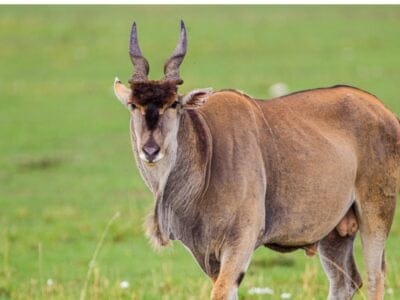
Eland
Both females and males have horns.
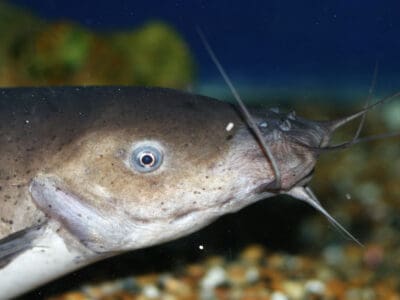
Electric Catfish
The electric catfish can discharge an electric shock up to 450 volts

Elephant
Spends around 22 hours a day eating!

Elephant Shrew
Found exclusively on the African continent!

Falcon
The fastest creatures on the planet!

False Widow Spider
False spiders actually prey on black widow spiders and other hazardous spiders
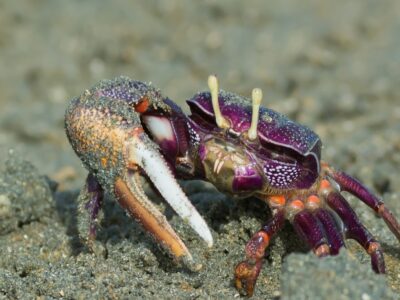
Fiddler Crab
The fiddler crab gets its name from the motion the males make with their over-sized claw during the mating ritual.

Fire Ball Python
The fire ball python morph is known for its rich golden and reddish-brown coloration.

Firefly
The firefly produces some of the most efficient light in the world
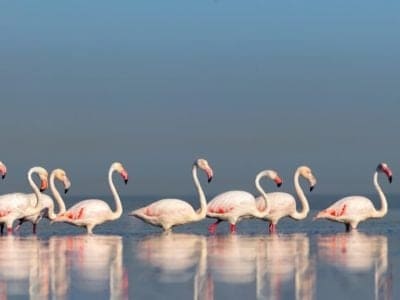
Flamingo
Sleeps on just one leg!

Flea
Adult fleas can jump up to 7 inches in the air

Fly
There are more than 240,000 different species!

Fox
Only 12 species are considered "true foxes"

Frog
There are around 7,000 different species!
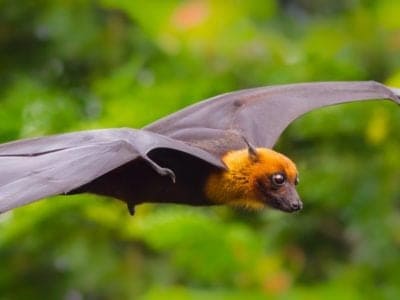
Fruit Bat
Among the largest bats in the world

Fruit Fly
Fruit flies are among the most common research animals in the world
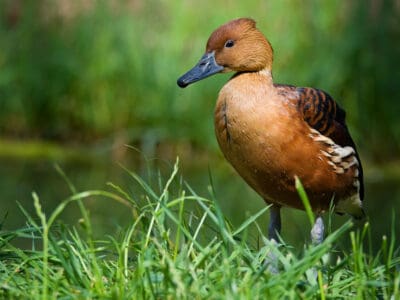
Fulvous Whistling Duck
They build a ramp from their nest, which leads to a nearby water source
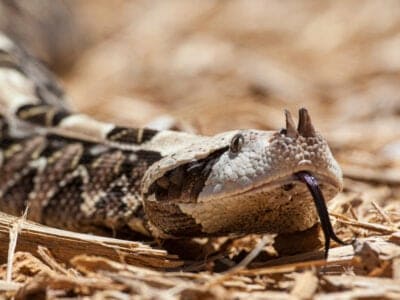
Gaboon Viper
Gaboon vipers are the largest vipers in Africa.

Gazelle
Named for the Arabic word for love poems

Gecko
There are thought to be over 2,000 species!

Gerbil
Originally known as the Desert Rat!

German Cockroach
The most common type of urban roach

Giant Trevally
The largest fish in its genus
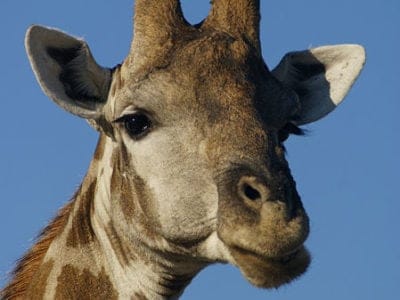
Giraffe
Long, black tongue can grow to 18 inches long!

Glass Lizard
Can grow up to 4ft long!

Glowworm
Found inhabiting dense woodland and caves!

Gnat
Males form large mating swarms at dusk

Goat
Most closely related to the Sheep!

Golden Oriole
Migrates between Europe and Asia!
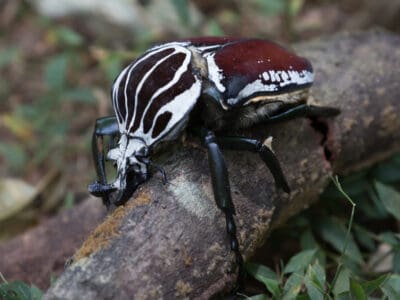
Goliath Beetle
Goliath beetles are the largest beetles in the world, and they can carry objects several times their weight.

Grasshopper
There are 11,000 known species!

Green Bee-Eater
Mainly eats honeybees!
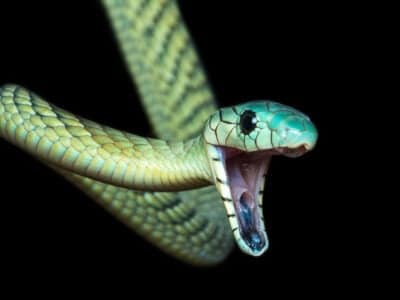
Green Mamba
Green mambas are fast, and can travel up to 7 miles per hour.
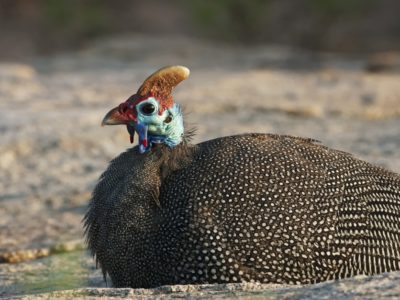
Guinea Fowl
Found in a vairety of African habitats!

Gypsy Moth
One of the most invasive species in the world

Hamster
Able to run as quickly backwards as forwards!

Hare
Can reach speeds of over 50 mph!

Hawk Moth Caterpillar
Many hawk moth caterpillars eat toxins from plants, but don’t sequester them the way milkweed butterflies do. Most toxins are excreted.

Hedgehog
Thought to be one of the oldest mammals on Earth!

Heron
Inhabits wetlands around the world!
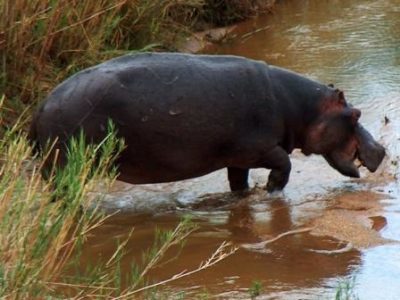
Hippopotamus
Has pink anti-bacterial sweat!
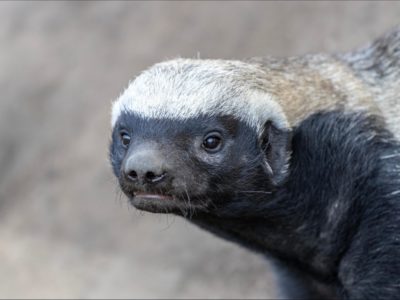
Honey Badger
One of earth's bravest creatures!

Honey Bee
There are only 8 recognized species!

Hoopoe
Stunning bird with a stinky way to deter predators!

Horse
Has evolved over 50 million years!

Horsefly
Horseflies have been seen performing Immelmann turns, much like fighter jets.

Housefly
The fly has no teeth

Human
Thought to have orignated 200,000 years ago!

Huntsman Spider
Some huntsman spiders have an interesting way of moving around. Some cartwheel while others do handsprings or backflips.
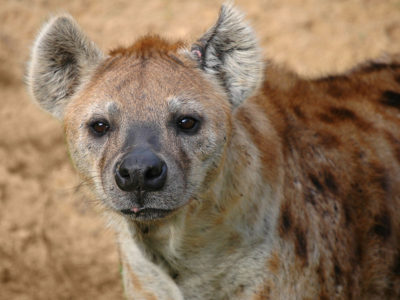
Hyena
There are four different species!

Ibis
Found in swamps, marshes and wetlands!

Impala
Able to jump over 10 feet high

Insects
There are an estimated 30 million species!

Jacana
The jacana has the ability to swim underwater
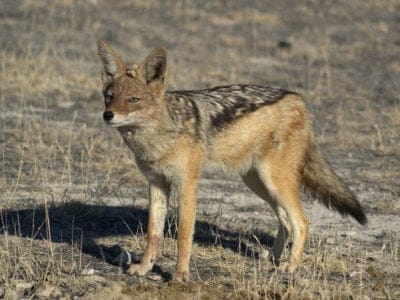
Jackal
Can maintain speeds of 16 km/h!

Jackson’s Chameleon
Have jousting battles with their horns.

Jumping Spider
Some can jump 50 times the length of their bodies
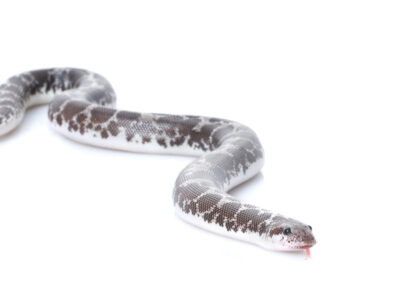
Kenyan Sand Boa
A popular pet snake that comes in dozens of morphs!

Kingfisher
Inhabits wetlands and woodlands worldwide!
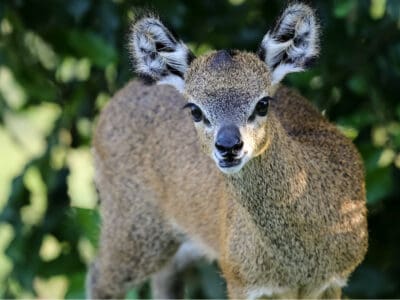
Klipspringer
Klipspringers can jump as high as 10-12ft!
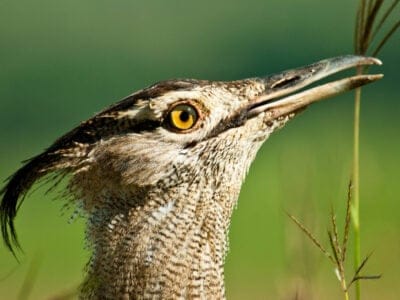
Kori Bustard
It's easily identified by its crest, large size, and wingspan
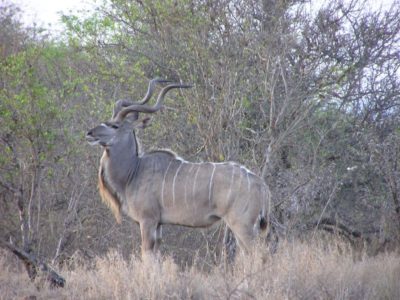
Kudu
Lives in herds of up to 24 individuals!

Ladybug
There are more than 5,000 species worldwide!

Lappet-faced Vulture
Lappet-faced vultures are tidy and wash their heads in a body of water after they’ve eaten

Leech
Has 10 pairs of eyes!
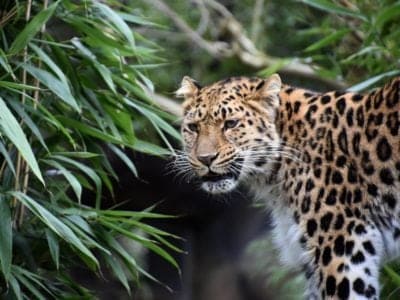
Leopard
Spends much of the time high in the trees!

Leopard Tortoise
The most widely distributed tortoise in Africa!

Lesser Jacana
The lesser jacana is nomadic, often moving in search of temporary wetland habitats.

Liger
The offspring of a lion and tiger parents!
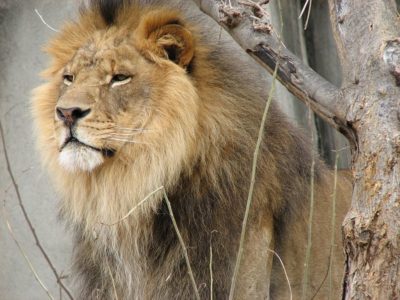
Lion
Lives in small groups called prides!

Lizard
There are around 5,000 different species!

Locust
Each locust can eat its weight in plants each day.

Maggot
Will only live in wet areas

Magpie
They are found across Europe, Asia and Africa!
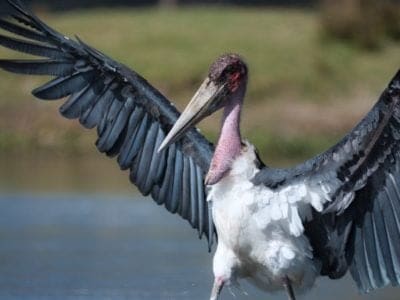
Marabou Stork
The marabou stork does not have a voice box.

Mayfly
There are 2,500 known species worldwide!

Mealybug
They have a symbiotic relationship with ants.

Millipede
Some species have a poisonous bite!

Mole
Primarily hunts and feeds on Earthworms!
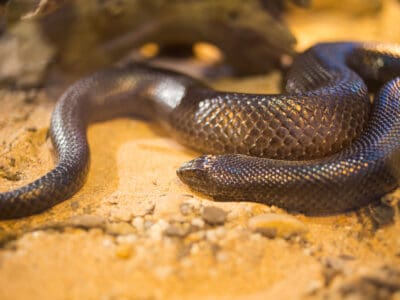
Mole Snake
“The mole snake can reach a length of 6.8 feet”
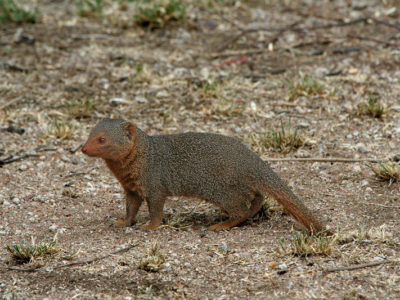
Mongoose
Range in size from just 1 to 3 foot!

Mongrel
Has characteristics of two or more breeds!

Monitor Lizard
Some species are thought to carry a weak venom!
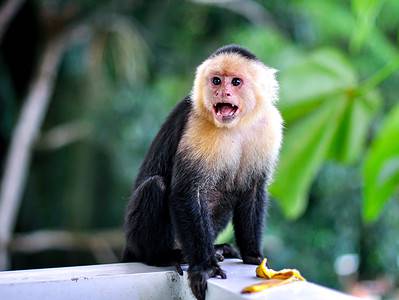
Monkey
There are around 260 known species!

Moorhen
Feeds on aquatic insects and water-spiders!

Mosquito
Only the female mosquito actually sucks blood

Moth
There are 250,000 different species!

Mouse
Found on every continent on Earth!
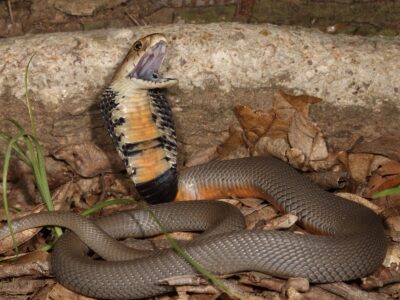
Mozambique Spitting Cobra
Mozambique Spitting Cobra is one of Africa's most dangerous snakes.

Mule
The offspring of a horse and donkey parents!
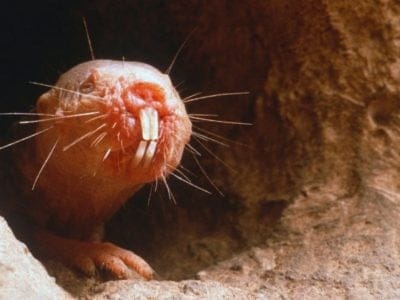
Naked Mole Rat
Naked mole rats don’t get cancer

Nightingale
Named more than 1,000 years ago!
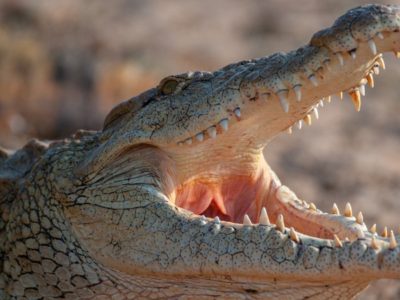
Nile Crocodile
Unlike other reptiles, the male Nile crocodile will stay with a female to guard their nest of eggs.
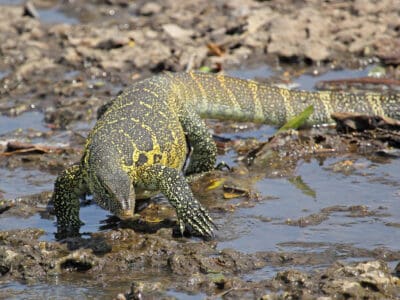
Nile Monitor
The Nile monitor is the world's fourth-largest lizard!
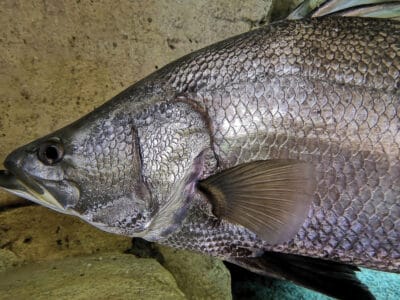
Nile Perch
Nile perch will sometimes eat those within its own species

No See Ums
There are more than 5,000 species.

Olive Baboon
Olive baboons will sometimes form strong friendships with each other

Orange Baboon Tarantula
Their nickname is "Orange Bitey Thing"!

Orb Weaver
Females are about four times the size of males
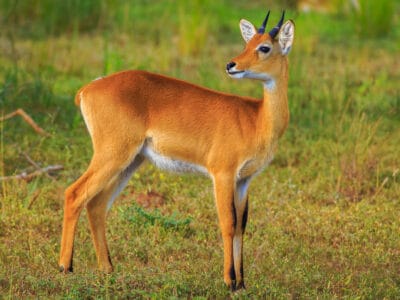
Oribi
Males oribis spend most of their time patrolling the borders of their territories; they can do this about 16 times an hour! However, 27% of their day is spent grazing.

Ornate Bichir
The ornate bichir can survive outside water for short periods of time

Osprey
They reuse nesting sites for 70 years!

Otter
There are 13 different species worldwide

Owl
The owl can rotate its head some 270 degrees
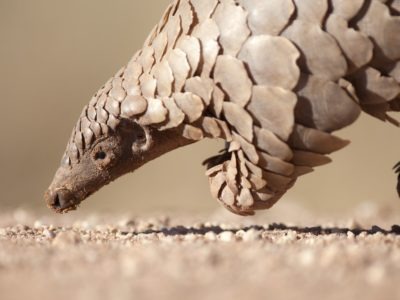
Pangolin
Bad eyesight, but great sense of smell

Parrot
Can live for up to 100 years!

Peregrine Falcon
Fastest animal on Earth

Pheasant
Females lay between 8 and 12 eggs per clutch!

Pigeon
They can find their way back to their nests from up to 1300 miles away.

Pompano Fish
They are bottom-feeders

Praying Mantis
The mantis can turn its head 180 degrees.
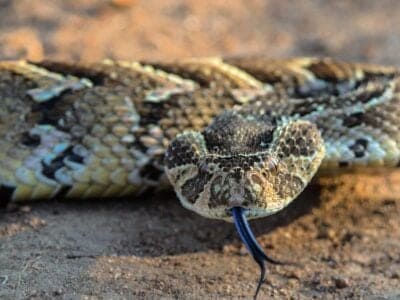
Puff Adder
This large snake is so-named because it will puff up its body to appear bigger than it is when directly threatened by a predator or person.

Quail
Inhabits woodland and forest areas worldwide!

Rabbit
There are more than 300 different species!

Rat
Omnivores that eat anything!
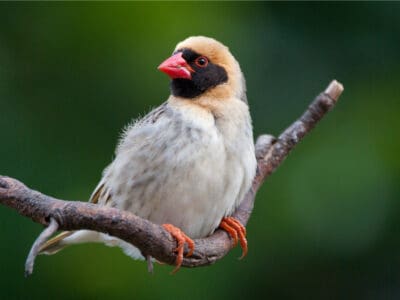
Red-Billed Quelea Bird
Is the most populous bird in the world

Red Spitting Cobra
Scientists believe that the red spitting cobra evolved from injecting venom to spitting it in response to the constant threat of early humans

Rhinoceros
It's horns are made from keratin!

River Turtle
Inhabits freshwater habitats around the world!

Robin
There are more than 45 species in Australia alone!
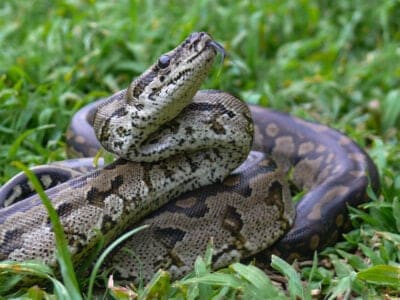
Rock Python
Rock pythons may have crossbred with the escaped Burmese pythons in Florida.

Rodents
The capybara, the world’s largest rodent, likes to be in and around bodies of water. Because of this, the Catholic Church in South America decided that it was a fish, and people were allowed to eat it during Lent and First Fridays.

Rooster
Will mate with the entire flock!

Sable Ferret
Ferrets were used during the Revolutionary War to keep down the rat population.

Sand Crab
The sand crab burrows beneath the sand with its tail
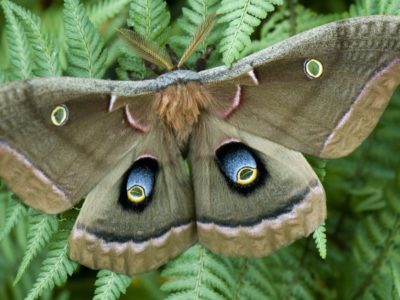
Saturniidae Moth
Some of the largest moths in the world

Scorpion
There are around 2,000 known species!

Sea Eagle
The sea eagle tends to mate for life with a single partner

Seahorse
Males give birth to up to 1,000 offspring!

Serval
Can leap more than 1 meter into the air!

Sheep
Around 35 million in the English countryside!
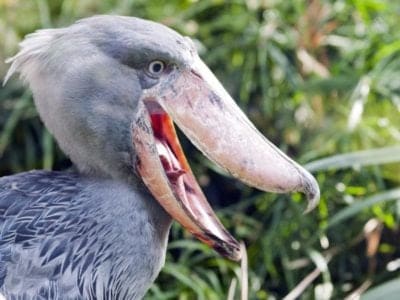
Shoebill Stork
Adults greet each other by clattering their bills together.

Shrew
The spinal column of the shrew Scutisorex somereni is so strong and reinforced that it can support the weight of an adult human.

Shrimp
There are 2,000 different species worldwide!

Skink Lizard
Some skinks lay eggs in some habitats while giving birth to skinklets in other habitats.

Slug
They glide around on one foot, which is aided by the slime they produce

Smallmouth Bass
A fierce fighter!

Smokybrown Cockroach
Has up to 45 eggs per egg case

Snail
There are nearly 1,000 different species!

Snake
There are around 4,000 known species worldwide

Sparrow
There are 140 different species!

Spider Wasp
They prey on spiders to feed their larvae or they parasitize other spider wasps.

Spiny bush viper
These shaggy snakes are only 2 feet long and mostly arboreal.
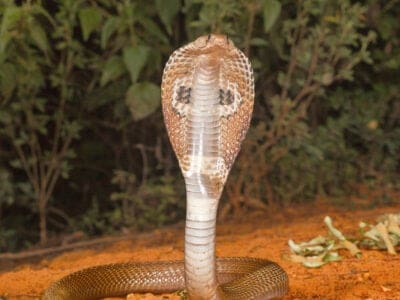
Spitting Cobra
Spitting cobras are types of cobras that can spit venom at predators and prey.

Squirrel
Small rodents found in woodlands worldwide!

Stick Insect
There are more than 3,000 different species!
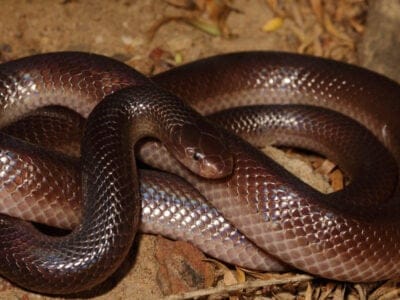
Stiletto Snake
Because of their unique venom delivery system, stiletto snakes are almost impossible to hold safely in the usual way (with fingers behind the head) without being bitten.

Stork
They can’t sing like other birds.
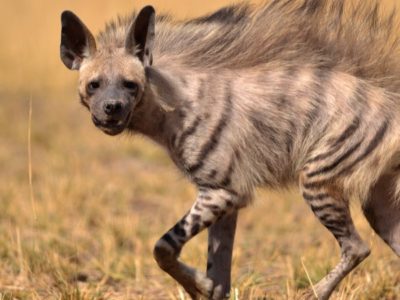
Striped Hyena
The striped hyenas usually mark their territories with the help of the scent gland secretions from their anal pouch.

Swan
Populations have been affected by pollution!

Tarantula Hawk
Tarantula hawks are excellent pollinators, especially for milkweed.

Termite
Their mounds can be up to 9 meters tall!

Theropod
Some theropods had feathers and may have been ancestors of modern birds.

Thrush
The American robin is called the robin because its red breast reminded European settlers of the robin back in the old country.

Tick
They inject hosts with a chemical that stops them from feeling the pain of the bite

Tiger Beetle
The adult tiger beetle is one of the fastest land insects in the world

Tortoise
Can live until they are more than 150 years old!

Tree Frog
Found in warmer jungles and forests!
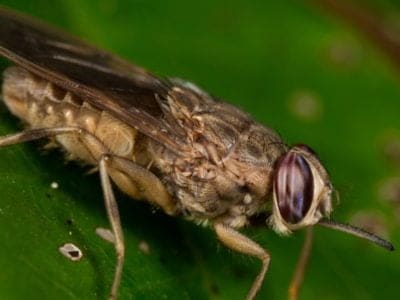
Tsetse Fly
Tsetse flies are large biting flies that live in the tropical regions of Africa.
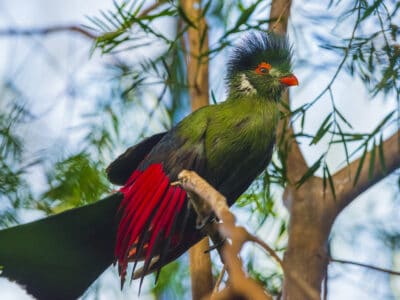
Turaco
Their name means “banana-eater,” but they rarely ever eat bananas.

Turtles
Some species of aquatic turtles can get up to 70 percent of their oxygen through their butt.

Vervet Monkey
Rarely found more than 450m from trees!

Vinegaroon
Vinegaroons can spray 19 times before the glands are depleted

Viper
Vipers are one of the most widespread groups of snakes and inhabit most

Vulture
There are 30 different species worldwide!
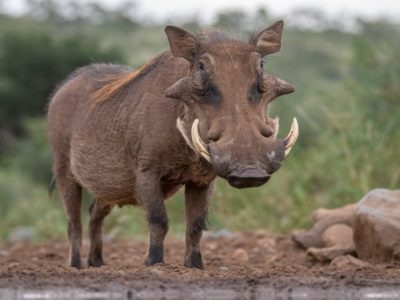
Warthog
Has two sets of tusks on it's face!

Wasp
There are around 75,000 recognised species!

Water Buffalo
Has been domesticated for thousands of years!

White Ferret / Albino Ferrets
There are two different types of white ferrets!
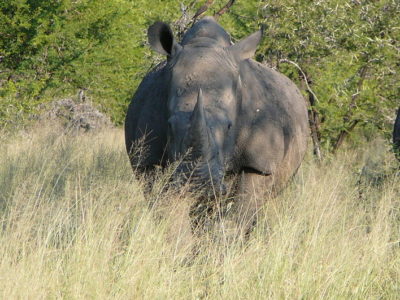
White Rhinoceros
The second largest animal on the land!

Wolf Spider
Carnivorous arachnid that hunts its prey.

Woodlouse
This animal can roll up into a ball

Woodpecker
There are 200 different species!

Worm
Doesn’t have eyes.

Wryneck
They feign death by making their bodies limp and closing their eyes.

Yellow Crazy Ant
One of the top 100 worst invasive species!
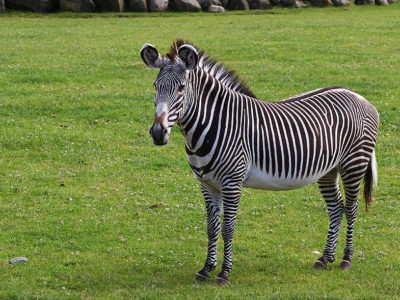
Zebra
Stripe patterns are unique to each individual!
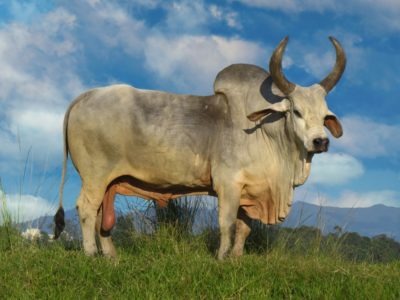
Zebu
There are around 75 different species!
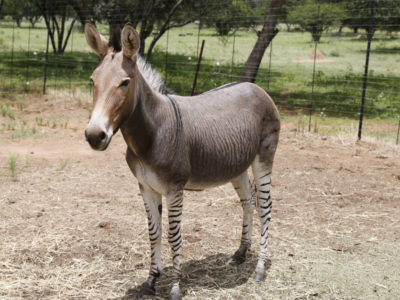
Zonkey
The offspring of Zebra and Donkey parents!
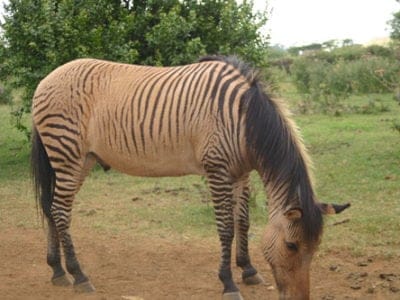
Zorse
The offspring of a Zebra and Horse parents!
Tanzanian Animals List
- Aardvark
- Aardwolf
- African Bullfrog
- African Bush Elephant
- African Civet
- African Clawed Frog
- African Fish Eagle
- African Jacana
- African Palm Civet
- African Wild Dog
- Agama Lizard
- Allosaurus
- American Cockroach
- Ant
- Antelope
- Armyworm
- Australopithecus
- Baboon
- Banana Spider
- Barb
- Barn Owl
- Barn Swallow
- Bat
- Bat-Eared Fox
- Bed Bugs
- Bee
- Beetle
- Beewolf wasp
- Bichir
- Bird
- Bird Snake
- Biscuit Beetle
- Black Mamba
- Black Rhinoceros
- Black Widow Spider
- Blind Snake
- Brahminy Blindsnake
- Brazilian Treehopper
- Brown-banded Cockroach
- Brown Dog Tick
- Buffalo
- Bumblebee
- Bush Baby
- Bush Viper
- Butterfly
- Caecilian
- Caracal
- Carpenter Ant
- Cat
- Caterpillar
- Catfish
- Centipede
- Ceratosaurus
- Chameleon
- Cheetah
- Chicken
- Cichlid
- Cockroach
- Coconut Crab
- Codling Moth
- Common Buzzard
- Common Furniture Beetle
- Common House Spider
- Cormorant
- Cow
- Crab
- Crab Spider
- Crane
- Cricket
- Crocodile
- Crocodylomorph
- Crow
- Cuckoo
- Dik-Dik
- Dog
- Dog Tick
- Donkey
- Dormouse
- Dragonfly
- Duck
- Dung Beetle
- Eagle
- Earthworm
- Earwig
- Eastern Green Mamba
- Eel
- Egyptian Cobra (Egyptian Asp)
- Egyptian Goose
- Egyptian Vulture
- Eland
- Electric Catfish
- Elephant
- Elephant Shrew
- Falcon
- False Widow Spider
- Fiddler Crab
- Fire Ball Python
- Firefly
- Flamingo
- Flea
- Fly
- Fox
- Frog
- Fruit Bat
- Fruit Fly
- Fulvous Whistling Duck
- Gaboon Viper
- Gazelle
- Gecko
- Gerbil
- German Cockroach
- Giant Trevally
- Giraffe
- Glass Lizard
- Glowworm
- Gnat
- Goat
- Golden Oriole
- Goliath Beetle
- Grasshopper
- Green Bee-Eater
- Green Mamba
- Guinea Fowl
- Gypsy Moth
- Hamster
- Hare
- Hawk Moth Caterpillar
- Hedgehog
- Heron
- Hippopotamus
- Honey Badger
- Honey Bee
- Hoopoe
- Horse
- Horsefly
- Housefly
- Human
- Huntsman Spider
- Hyena
- Ibis
- Impala
- Insects
- Jacana
- Jackal
- Jackson’s Chameleon
- Jumping Spider
- Kenyan Sand Boa
- Kingfisher
- Klipspringer
- Kori Bustard
- Kudu
- Ladybug
- Lappet-faced Vulture
- Leech
- Leopard
- Leopard Tortoise
- Lesser Jacana
- Liger
- Lion
- Lizard
- Locust
- Maggot
- Magpie
- Marabou Stork
- Mayfly
- Mealybug
- Millipede
- Mole
- Mole Snake
- Mongoose
- Mongrel
- Monitor Lizard
- Monkey
- Moorhen
- Mosquito
- Moth
- Mouse
- Mozambique Spitting Cobra
- Mule
- Naked Mole Rat
- Nightingale
- Nile Crocodile
- Nile Monitor
- Nile Perch
- No See Ums
- Olive Baboon
- Orange Baboon Tarantula
- Orb Weaver
- Oribi
- Ornate Bichir
- Osprey
- Otter
- Owl
- Pangolin
- Parrot
- Peregrine Falcon
- Pheasant
- Pigeon
- Pompano Fish
- Praying Mantis
- Puff Adder
- Quail
- Rabbit
- Rat
- Red-Billed Quelea Bird
- Red Spitting Cobra
- Rhinoceros
- River Turtle
- Robin
- Rock Python
- Rodents
- Rooster
- Sable Ferret
- Sand Crab
- Saturniidae Moth
- Scorpion
- Sea Eagle
- Seahorse
- Serval
- Sheep
- Shoebill Stork
- Shrew
- Shrimp
- Skink Lizard
- Slug
- Smallmouth Bass
- Smokybrown Cockroach
- Snail
- Snake
- Sparrow
- Spider Wasp
- Spiny bush viper
- Spitting Cobra
- Squirrel
- Stick Insect
- Stiletto Snake
- Stork
- Striped Hyena
- Swallowtail Butterfly
- Swan
- Tarantula Hawk
- Termite
- Theropod
- Thrush
- Tick
- Tiger Beetle
- Tortoise
- Tree Frog
- Tsetse Fly
- Turaco
- Turtles
- Vervet Monkey
- Vinegaroon
- Viper
- Vulture
- Warthog
- Wasp
- Water Buffalo
- White Ferret / Albino Ferrets
- White Rhinoceros
- Wolf Spider
- Woodlouse
- Woodpecker
- Worm
- Wryneck
- Yellow Crazy Ant
- Zebra
- Zebu
- Zonkey
- Zorse
FAQs (Frequently Asked Questions)
What Animals Live in Tanzania?
Tanzania has a huge number and variety of animals. You can find the typical African animals, including cheetahs, giraffes and crocodiles. You will also find a mix of animals on the coastline, on Zanzibar Island and on the mountain ranges.
Here are some facts about the most common animals in Tanzania.
- Wildebeest: The wildebeest is a type of wild cattle animal with curved horns and a slight hump. Wildebeests are famous for the great migration they perform across the plains of Africa each year. This migration attracts many tourists who want to see this once-in-a-lifetime experience.
- Lions: Tanzania has a healthy population of lions. You can often see lions in wildlife parks. Lion families congregate near river banks in the dry season. Tanzania also has cheetahs and leopards, but it is rare to see them.
- Elephants: Like the wildebeests, elephants migrate in huge herds twice a year. Elephant populations are healthy in Tanzania. The best place to see them is Tarangire National Park.
- Zebras: These beautifully striped members of the horse family are common in Tanzania, where they are roaming freely across the grasslands.
- Thomson’s gazelle: Named for the Scottish explorer Joseph Thomson, these dainty, lovely gazelles are members of the antelope family. Although they are a popular hunting trophy, there are still a lot of Thomson’s gazelles in Tanzania and other African countries.
Are There Tigers in Tanzania?
There are no tigers in Tanzania or any African country. Tigers live in Southeast Asia, parts of South China, and Siberia. Africa has other big cats, including lions and leopards, but it does not have tigers.









